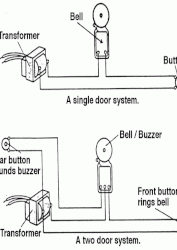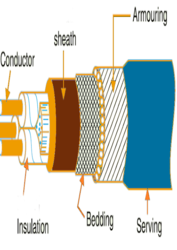Hiring an electrical wiring contractor is often an expensive proposition. Yet, without proper expertise, trying to install or repair your own electrical wiring project can be a dangerous undertaking. Severe electrical shock, burns, and lethal electrocution can be the dire consequences of ill-advised bravado. Improper wiring installations can also lead to the bigger problems of appliance failures and circuit shorts. In some cases, electrical fires can spark and destroy your beautiful home. While shady electrical wiring contractors exist, there’s also a reason these contractors are expensive. Safety First Before…
Category: Cables
Electrical Engineering Articles
Doorbell Wiring and Installation
A typical residential doorbell system includes a transformer (to convert 120VAC to 24VAC), a bell/buzzer, and button for ringing the bell. Residential doorbell wiring uses low voltage except for the line side of the transformer. The line side of the transformer must be terminated in an approved electrical box, similar to a light switch or wall outlet. The transformer is used to step the voltage down from 120V to 16, 18 or 24 volts. One or two buttons for front and back door can be used to activate your doorbell…
Construction of Underground Cables
Underground Cables Construction An underground cable when used at high voltage consists of one or more central conductor (core) of stranded aluminium. over which number of layers are provided in order to provide necessary insulation, mechanical strength and protection.This article is about Construction of Underground Cables Following figure shows the general layout of a 3-core underground cable. It basically consists of the following parts. Major Parts of Underground Cables i) Core or Conductors ii) Insulation iii) Metallic sheath iv) Bedding v) Armoring. The above parts may vary depending on the operating voltage and the application. (i) Core Core is…


